
Mulches define a garden’s character. Organic options give landscapes different looks, and all break down to help feed the soil. Others have more permanency. Either way, organic and decorative garden top dressings add beauty and distinction to plantings. Some take outdoor spaces to new visual heights, while others are simply functional in their weed-covering ability. Either way, gardeners have lots of options from which to choose.
Organic Mulches
These are the mulches that most gardeners rely on. Of course, shredded bark mulch is the standard that’s most available at nurseries and garden centers, but there is more to organic mulch than popular bark and shredded-wood options.
Pine Straw
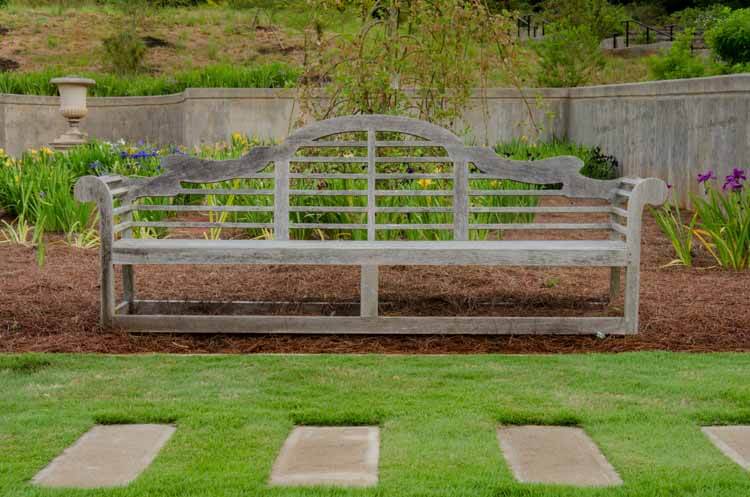
This attractive mulch typically comes in bales and consists of the dried needles of the southeastern longleaf pine (Pinus palustris), a favorite in the logging industry. Its textural needles create an attractive reddish-brown mat that almost looks grassy when blanketing the ground among beds with small trees, shrubs, and perennials. It also resists washing away, making it suitable for sloped beds. As is breaks down, it slightly acidifies the soil, making it a good mulch for acid-loving rhododendrons, azaleas, and camellias. It effectively crowds out weeds and holds soil moisture, if applied at a depth of 2-3-inches.
Though not readily available for purchase, white pine straw (Pinus strobus) is softer and finer than that of longleaf pine. Gardeners with white pines should consider collecting the needles for garden mulch. They hold water well, stop weeds, and are equally suited to acid-loving plantings.
Cocoa Shell Mulch
This sweet, chocolaty smelling mulch is a byproduct of the chocolate industry. It creates a good cover for small bed spaces and containers and breaks down slowly. Apply it at a depth of 2 inches (deeper applications may mold along the soil surface). One caveat of this mulch is that dogs may try to consume it, so keep it away from gardens where dogs may venture.
Compost
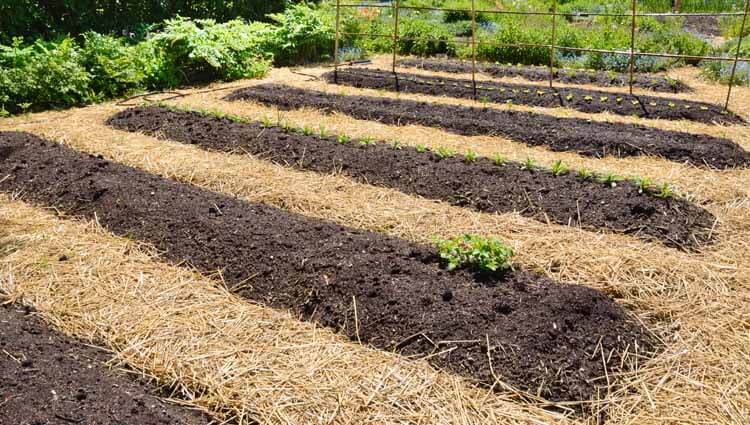
If your garden soil needs extra organic matter quickly, this is the mulch you need. Compost looks neat and tidy, and if applied at a depth of 3 inches, it will effectively crowd out weed seeds. One downside is that it breaks down quickly and needs to be applied in both spring and fall, but your garden plants will thank you. If you don’t compost your own leaves and vegetable scraps at home, try Black Gold® Garden Compost Blend. It’s OMRI Listed for organic gardening.
Leaf Mulch
Shredded leaves from last year’s landscape make an attractive mulch that is essentially free if you have lots of trees in your yard. They hold water, are excellent at stopping weeds, and break down fairly quickly to add needed organic matter to soils. To create this mulch, gather your fall leaves, and shred them with a leaf blower/shredder. Pile the leaves and let them overwinter. By spring, they will be partially composted and ready to apply to beds and borders.
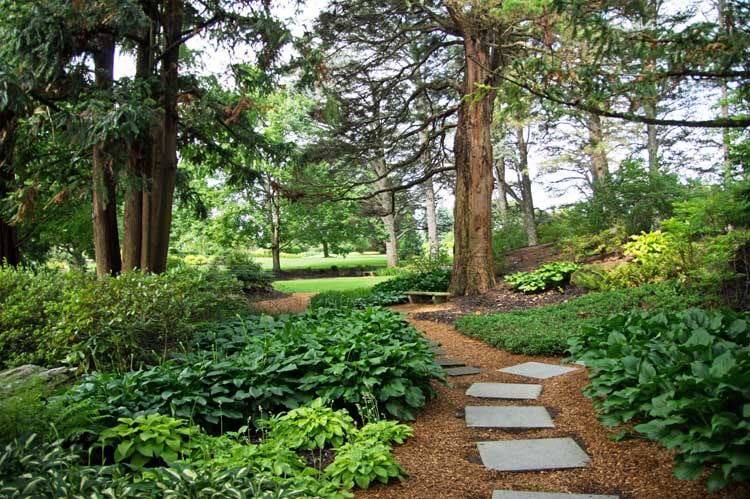
Straw, Hay, or Glass Clippings
Vegetable gardens deserve an application of sweet-smelling straw or hay to keep weeds down and retain moisture. Lining vegetable garden walkways with either will allow gardeners to harvest on wet days without getting their feet muddy. The difference between straw and hay is that hay is relatively seed-free and more desirable, while straw is derived from cereal crops, like wheat or oats, and always contains a little seed that will germinate in summer. Straw bales are easier to come by at nurseries or home and garden stores. Just pulls up any seedlings as they arise in the garden. Grass clippings are a free option that does the same job as hay or straw, just be sure to cut grass that is seed free.
Inorganic Mulches and Decorative Covers
Most inorganic options have a higher level of permanency because they are heavier, more time intensive to apply, and harder to remove. Gardeners must have a real dedication to stone, glass, or lava rock options when applying them to planting spaces.
Landscape Gravel, Pebbles, or Stones

Stones create a more permanent landscape mulch that is typically applied atop a layer landscape fabric and edged with metal or cut-stone edging. If applied correctly, decorative stones are low-maintenance and look clean. They come in a variety of colors, sizes, and shapes from large, rounded river rock to edgy crushed stone or pea gravel. River rock is favored for large landscape applications while pea gravel is a good choice for succulent garden beds or walkways. Before choosing stone for your landscape, be sure it’s truly what you want because it is both costly and labor intensive to apply and remove.
Decorative Container Gravel

There are many decorative gravels for use in succulent containers, terrariums, and intricate potted plantings like fairy gardens. These fine gravels and come in many colors to enhance potted gardens.
Glass Mulch
Large chunks of tumbled glass, fine frosted sea glass, or colorful glass gems have a variety of uses in landscape or container gardens. Large tumbled glass mulch in oceanic colors is an elegant choice for seaside gardens, rock gardens, or western plantings. A base of light-colored mulch cloth will keep the colors vibrant while helping to manage weeds. Terrariums or succulent containers benefit from the sleek look of sea glass or glass gems.

Crushed Shells
Oceanside gardens are often decorated with a base of natural shells, crushed or whole. Their bright looks are just at home along the waterside, and they are free if simply collected on the beach over a period of time. They look especially pretty arranged in grassy or succulent containers.
Lava Rock
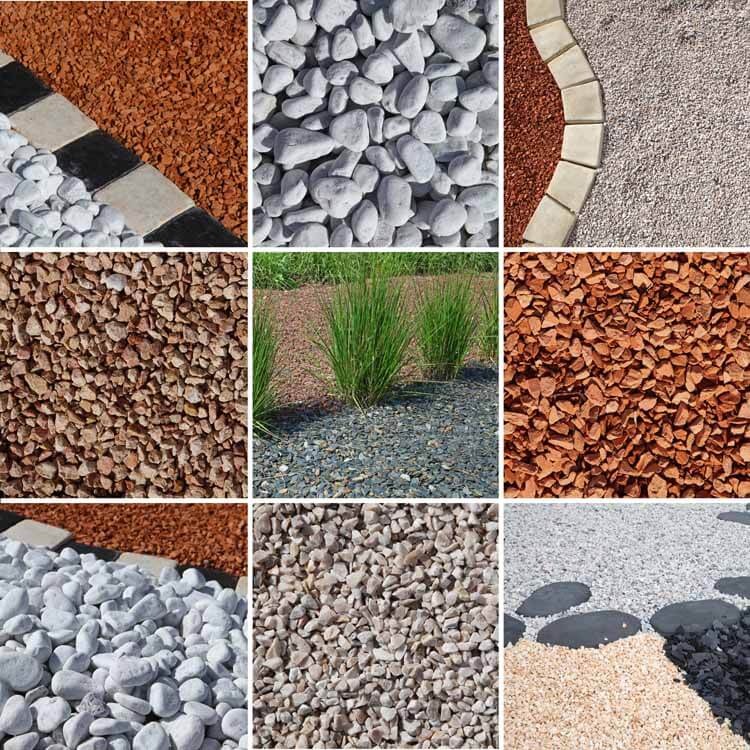
The benefit of lava rock is that it is lightweight and holds water. This porous, volcanic rock typically comes in natural shades of rust-red, brown, gray, or black. (Keep in mind that black lava rock heats up and is not recommended for hot climates.) The neutral-colored brown, gray, and black options are easier for designers to work with because they don’t stand out. Red lava rock can look almost garish without the right plantings, so be careful when choosing it. Its looks can be softened by billowy shrubs, blue-gray plants, and white or gray decorative boulders.
Landscape Fabric and Plastic
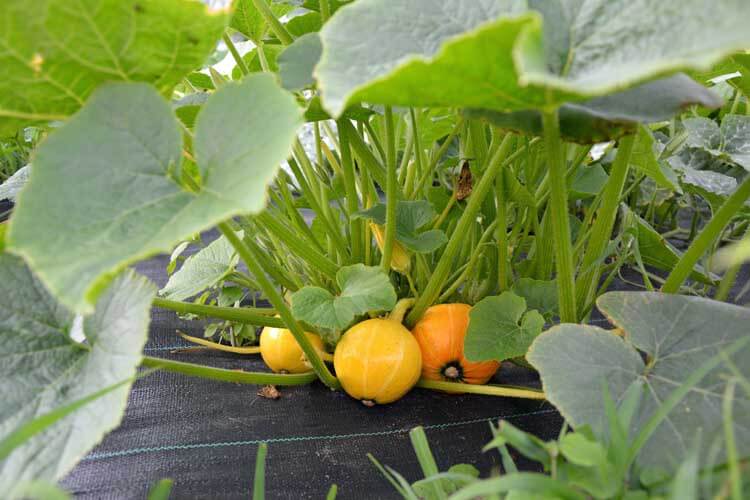
These are functional ground coverings for vegetable and fruit growing. They protect the ground from weeds, hold in moisture, and keep fruits on the ground clean. Holes are punched in the fabric or plastic for plants to grow through. These “mulches” are not pretty but they do the job.
Mulch to Avoid
Colored Mulch
Colored mulch is rarely attractive in home landscapes because it’s visually overpowering. The mulch, not the plantings, takes center stage. Some even consider it tacky. It looks better suited to a parking lot landscape than a home landscape.
Fresh Bark Mulch
Never cover your beds with fresh bark mulch. If the mulch still smells of a fresh tree, it is not ready for the landscape. Why? Because freshly cut mulch binds soil nitrogen and is actually detrimental to plants. Let fresh mulch compost and break down for a while before using it.
Shredded Rubber Mulch
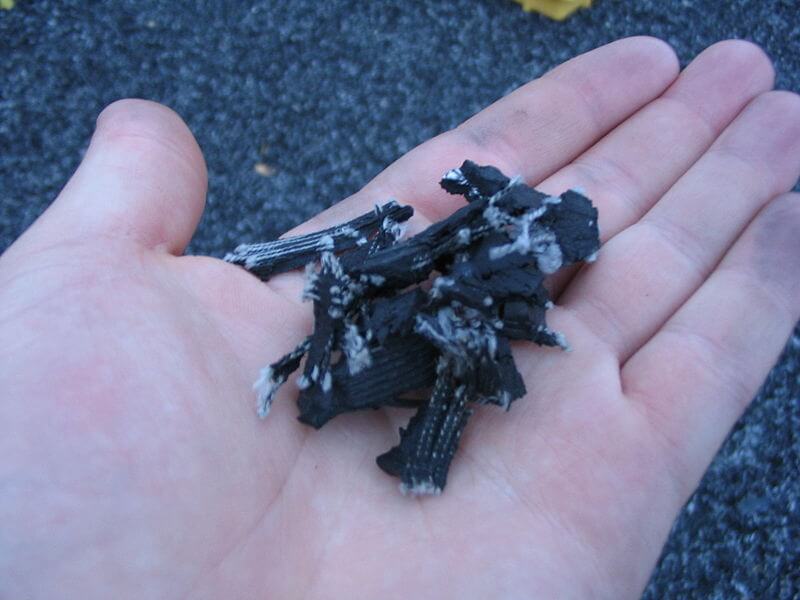
Some will tell you that this is the best mulch for playgrounds, but shredded rubber mulch is never a good thing for the environment. It gets hot, smells as it heats up, never breaks down, and works its way into the soil to remain an annoyance forever.
Choose a garden cover that best supports your garden and personal aesthetic. May sure it blends well with your plantings and helps your plantings grow and look their best.
